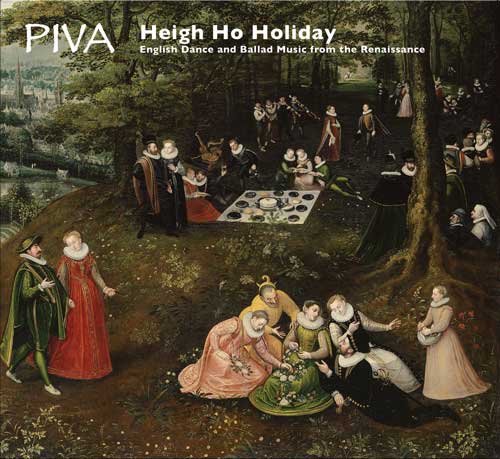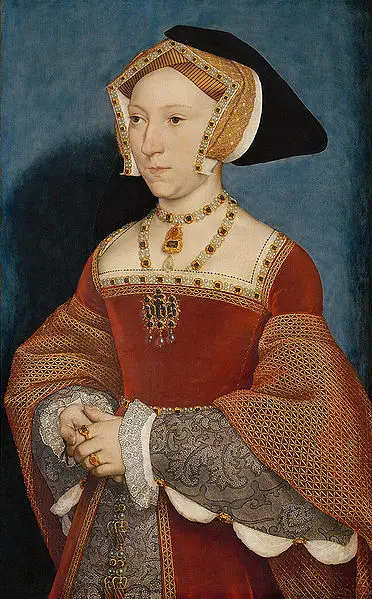
George Clifford attired as the Knight of Pendragon Castle for the Accession Day tilt of 1590
"Now approached the day when, on November 17, the tournament was to be held, as I mentioned before, St. Elizabeth's day being November 19. About twelve o'clock the Queen with her ladies placed themselves at the windows in a long room of weithol [Whitehall] palace, near Westminster, opposite the barrier, where the tournament was to be held. From this room a broad staircase led downwards, and round the barrier stands were arranged by boards above the ground, so that everybody by paying 12d. could get a stand and see the play. The pence are to be understood as silver pence, equal to one groschen of our money. Many thousand spectators, men, women and girls, got places, not to speak of those who were within the barrier and paid nothing. During the whole time of the tournament all who wished to fight entered the list by pairs, the trumpets being blown at the time and other musical instruments. The combatants had their servants clad in different colours; they, however, did not enter the barrier, but arranged themselves on both sides. Some of the servants were disguised like savages, or like Irishmen, with the hair hanging down to the girdle like women; others had horse manes on their heads; some came driving in a carriage, the horses being equipped like elephants; some carriages were drawn by men, others appeared to move by themselves; altogether the carriages were of very odd appearance. Some gentlemen had their horses with them, and mounted in full armour directly from the carriage. There were some who showed very good horsemanship and were also in fine attire. The manner of the combat each had settled before entering the lists. The costs amounted to several thousand pounds each. When a gentleman with his servant approached the barrier, on horseback or in a carriage, he stopped at the foot of the staircase leading to the Queen's room, while one of his servants in pompous attire of a special pattern mounted the steps and addressed the Queen in well-composed verses or with a ludicrous speech, making her and her ladies laugh. When the speech was ended he in the name of his lord offered to the Queen a costly present, which was accepted, and permission given to take part in the tournament. In fact, however, they make sure of the permission before preparing for the combat. Now always two by two rode against each other, breaking lances across the beam. On this day not only many fine horses were seen, but also beautiful ladies, not only in the royal suite, but likewise in the company of gentlemen of the nobility and the citizens. The fête lasted until five o'clock in the afternoon, when milurtt [milord] Lester, the royal Master of the Horse, gave the sign to stop. The Queen handed the first prize to the Counts of Ocsenfortt (Oxford) and of Arundel, the latter being the eldest son of the Duke of Nortfech (Norfolk), whom the queen had ordered to be beheaded at St Katherine's square on a scaffold still standing. The son had for a long time also been in disgrace on account of his father, but he was pardoned and received permission to take part in the tournament. The others got prizes according to their performances."1
In 1576, "A Form of Prayer with Thanksgiving", printed prayers for Accession Day, were issued by Edmund Grindal, Archbishop of Canterbury. In his book, Propaganda and the Tudor State, John P.D. Cooper explains that "Minister and people recited antiphonal responses for the queen's deliverance from her enemies, the service concluding with collects for the queen's majesty and selections from the psalms"2 and in Queenship and Political Discourse in the Elizabethan Realms Natalie Mears writes of how this prayer book "likened Elizabeth to the reforming Old Testament kings, Jehosaphat, Josiah and Hezekiah".3
Accession Day celebrations continued well into the 18th century with Elizabeth being seen as an "icon of the Protestant revolution" and effigies of the Pope and the Devil being traditionally burnt on this day.4
If you're a Tudor Society member, you can enjoy my Claire Chats video talk on Elizabeth I's accession and the stories regarding her hearing news of it - click here.
Notes and Sources
- Transactions of the Royal Historical Society (Vol. 9). London: Forgotten Books. (Original work published 1895), p. 258-259. Viewed at http://www.forgottenbooks.com/readbook_text/Transactions_of_the_Royal_Historical_Society_v9_1000306954/265
- Cooper, John P.D. (2003) Propaganda and the Tudor State: Political Culture in the Westcountry, Clarendon Press, p. 25.
- Mears, Natalie (2005) Queenship and Political Discourse in the Elizabethan Realms, Cambridge University Press, p. 230.
- Roud, Steve (2006) The English Year, Penguin, p. 483.



May the Angels wing the soul of Mary Tudor to her rest as they did 500 years ago. Amen. Rest in peace.🌈 🌹🌹🌹🌺🌺💖and may eternal light shine upon you now and always. Amen.
Cardinal Reginald Pole rest in eternal peace and the light of hope be with your soul. Amen
If there was a hell, she would be burning in it, as a result of the many murders she was responsible for.